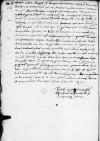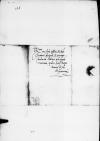Acceptis superiori tempore litteris vestris, testibus in nos vetusti amoris et observantiae, gavisi sumus, inde argumentum accipientes, quod nostri obliti non estis, gratissimum enim nobis fuit post longum silentium eam a vobis consolationem accipere de vestro statu ac desiderio ad propria remeandi. Reditus siquidem vester ad sponsam suam est pernecessarius, necessitatis enim rationem redderem, si nescirem eius prudentiam, qua etiam occultiora cognoscere et consequi potest.
Equidem vero, dum essem Cuyaviensis episcopus, vicinus vestro episcopatui, curavi intelligentiam habendo cum administratore, ut illic omnia meo terrore in sacra religione integra haberentur. Nunc vero in certis locis videntur laxatis habenis labi in deteriora, sed animavi reverendissimum ⌊dominum modernum Cuyaviensem⌋, ut scandalo occurreret, quia tunc sua res ageretur, cum proximus paries ardet, nec dubito, quod insegniter faciet eo modo, quo ipse feci, dum ad incolendum episcopatum venerit.
Exspectavi praeterea Tuum adventum magno desiderio et omnia parata, quibus Te ungerem ornaremque parata habui. Sed nunc, dum veneris honore et auctoritate maiori ornatus, pertinentius id ipsum faciam, modo desideratus ad nos redeas, pro Tuo vero reditu egi et ago apud ⌊nostras maiestates⌋ diligenter, itidem et reverendissimus ⌊dominus Cracoviensis⌋, sed sacra ⌊maiestas regia⌋, observans sacram ⌊imperialem maiestatem⌋ summo amore, mavult adhuc Te istic esse, ut Tu repraesentes suae maiestatis praesentiam, quod suffectus Tibi facere nequiret neque sciret, tamen maiestas sua Tui iam miserebitur et ego, qui Te diligo, Tibi deesse nolo. Tu vero etiam sis nostri memor, etiam ubi se offeret occasio coram ⌊caesarea maiestate⌋, nam ei sacrosanctae familiae inservivi integra fide a multis annis et nunc volente Domino Deo magis inserviam, cum ea dignitate in regno eminentiori adornatus sim. Quantum vero sacrae maiestatis ⌊Romanorum regis⌋ rebus faveo, quantumve favoris exhibeo, iam Deus novit et multorum cognitioni occultum non est.
Indutiae inter ⌊reges⌋ de ⌊regno Hungariae⌋ dissidentes brevi cessabunt et metuendum est, ne ⌊Turcus⌋ in detrimentum Christianae reipublicae formidandas vires suas interponat. Nam uti huc a fidedignis scriptum et nuntiatum est, conatus suos parat in ⌊Italiam⌋ et ⌊Austriam⌋, serenissimus autem ⌊rex⌋ noster, cui est bellum cum ⌊Valacho⌋ et quem feliciter attrivit, hactenus egit pro concordandis ipsis ⌊regibus⌋, nam ea dissensio est perniciosissima universae Christianae reipublicae, praesertim cum haeresis Luteriana semine malo superseminavit zisanias inter Christianos principes, quorum concordia, uti fortissimo clipeo, respublica Christiana salvari deberet. Sed fortassis ira Dei non permittit, ut tuti, ut concordes simus, licet habeat alios modos puniendi nos, sed cum superbus animus excelso non cedit superbiaque Deo exosa excellere conatur, omnia in ruinam vertuntur. Pro Deo, detur bona spes populo Christiano caesaris auctoritate. Nam non ignoramus, quid sit ⌊Turcus⌋, ubi ei strenue repugnatur. Faciendum quandoque periculum esset, praemia divina clementia et procul dubio omnibus consolatio daretur. Si istic est reverendissimus ⌊dominus Campeius⌋ cardinalis atque etiam reverendissimus dominus Gurcensis[1], illis me commendet et devoveat Vestra Reverendissima Dominatio. Quae feliciter valeat et nos amet et saepius scribat.



